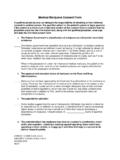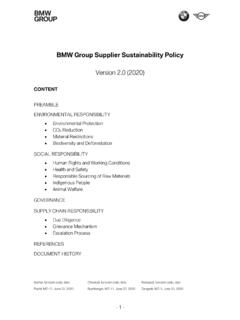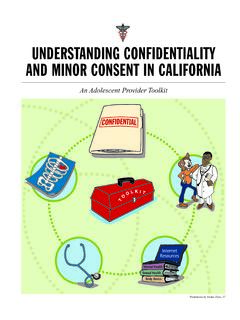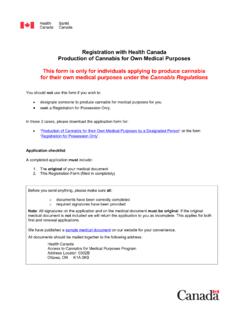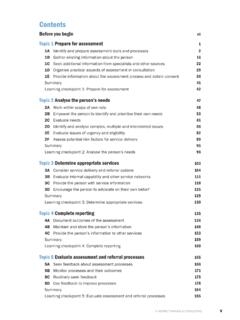Transcription of Trigger Point Injections (Adult, Peds)
1 STANDARDIZED PROCEDURE. Trigger Point Injections (Adult, Peds). I. Definition Relief of chronic myofascial pain by injecting local anesthetic into areas of tenderness called Trigger points.. II. Background Information A. Setting: The setting (inpatient vs outpatient) and population (adults vs pediatrics) for the Advanced Health Practitioner (AHP) is determined by the approval of the privileges requested on the AHP Privilege Request Form. If the procedure is being done on a Pediatric patient, make sure Child Life Services is involved and use age appropriate language and age appropriate developmental needs with care of children, as appropriate to the situation. B. Supervision: The necessity of this protocol will be determined by the AHP in collaboration with the supervising physician or his/her designee. Designee is defined as another attending physician who works directly with the supervising physician and is authorized to supervise the AHP.
2 Direct supervision will not be necessary once competency is determined, as provided for in the protocol. The AHP will notify the physician immediately upon being involved in any emergency or resuscitative events or under the following circumstances: 1. Patient decompensation or intolerance to the procedure 2. Bleeding that is not resolved 3. Outcome of the procedure other than expected C. Indications One of the sources of chronic pelvic pain is myofascial pain. Injection of Trigger points has been found to be 60-90% successful in relieving myofascial pain. D. Precautions/Contraindications Allergy to local anesthetic. III. Materials 1. Mayo stand 2. Clean gloves 3. Chlorhexadine swabs or other antiseptic 4. Local anesthesia ( 1% lidocaine, bupivacaine). This may be buffered with a 1:5 admixture of sodium bicarbonate to anesthetic solution), 5. 10-15 ml syringe 1. STANDARDIZED PROCEDURE. Trigger Point Injections (Adult, Peds). 6. 25 or 27 gauge or spinal needle 7.
3 4x4 gauze pads. IV. Trigger Point Injection A. Counsel patient re: procedure and obtain signed informed consent , perform a timeout. Obtaining informed consent at the first visit for a series of 5 Injections can be followed by verbal consent at the next four visits. The principal risks are injection site pain, bleeding or erythema. Inadvertent Injections into blood vessels may result in high levels of anesthetic in the central nervous system and seizure activity. This risk can be minimized by assuring that the needle is not within a blood vessel and by injecting the anesthetic slowly. Alternatives to Trigger Point Injections include physical therapy with myofascial release and, if available, ultrasound disruption. B. Pre-treatment evaluation Assess muscles of the abdomen, buttocks, pelvis and perineum for Trigger points. If Trigger points are identified determine whether Injections are the appropriate and preferred method of treatment.
4 Discuss the risks, benefits and anticipated outcomes with patient. C. Set up (if applicable). Gather materials D. Patient Preparation Explain the steps of the procedure to the patient. Advise patient that she may experience pain or burning during the injection. The Trigger Point and surrounding area may feel numb or painful for a few hours after the injection. Over time and with more Injections she should experience pain relief. E. Procedure 1. Isolate the Trigger points by applying directed pressure with a Q- tip to areas of tenderness. Consider using a surgical pen to mark the Trigger points. 2. Position, drape and prep the area with Chlorhexadine. 3. Once the Trigger Point is localized with the needle and it has been determined that the needle is not in a vessel, inject 5-10 ml of local anesthesia into the area. Injecting at a slow pace helps decrease the risk of side effects. 4. Apply pressure to injection site for hemostasis as needed.
5 5. Repeat procedure to other Trigger points that have been identified. F. Post-procedure 1. Assess patient level of comfort. 2. Provide additional pain relief measures as needed. 2. STANDARDIZED PROCEDURE. Trigger Point Injections (Adult, Peds). G. Follow-up treatment A series of five Trigger Point Injections are usually needed before assessing the degree of benefit. Significant pain relief may be demonstrated after the first injection but may be short-lived. The length of benefit increases with each subsequent injection. A pain assessment should be completed at each visit with an in depth discussion of progress after five Injections . Then a follow-up plan that may include ongoing Trigger Point Injections will be discussed with the patient. H. Termination of treatment At the request of the patient, successful treatment of pain, worsening of pain or when the provider feels that the Injections are no longer warranted. V. Documentation A.
6 Documentation is in the electronic medical record 1. Documentation of the pretreatment evaluation, consent , and any abnormal physical findings. 2. Record the time out, indication for the procedure, procedure, type and size of needle used, EBL, the outcome, how the patient tolerated the procedure, medications (drug, dose, route, & time) given, complications, and the plan in the note, as well as any teaching and discharge instructions. B. All abnormal findings are reviewed with supervising physician. VI. Competency Assessment A. Initial Competence 1. The AHP will be instructed on the efficacy and the indications of this therapy and demonstrate understanding of such. 2. The AHP will demonstrate knowledge of the following: a. Medical indication and contraindications of Trigger Point Injections b. Risks and benefits of the procedure c. Related anatomy and physiology d. consent process e. Steps in performing the procedure f. Documentation of the procedure g.
7 Ability to interpret results and implications in management. 3. AHP will observe the supervising physician perform each procedure at least once and perform the procedure three times under direct supervision. 4. Supervising physician will document AHP's competency prior to performing procedure without direct supervision. 3. STANDARDIZED PROCEDURE. Trigger Point Injections (Adult, Peds). 5. The AHP will ensure the completion of competency sign-off documents and provide a copy for filing in their personnel file and a copy to the medical staff office for their credentialing file. B. Continued proficiency 1. The AHP will demonstrate competence by successful completion of the initial competency. 2. Each candidate will be initially proctored and signed off by an attending physician. AHP must perform this procedure at least three times per year. In cases where this minimum is not met, the attending, must again sign off the procedure for the AHP.
8 The AHP will be signed off after demonstrating 100% accuracy in completing the procedure. 3. Demonstration of continued proficiency shall be monitored through the annual evaluation. 4. A clinical practice outcomes log is to be submitted with each renewal of credentials. It will include the number of procedures performed per year and any adverse outcomes. If an adverse outcome occurred, a copy of the procedure note will be submitted. VII. RESPONSIBILITY. Questions about this procedure should be directed to the Chief Nursing and Patient Care Services Officer at 353-4380. VIII. HISTORY OF POLICY. Revised Oct 2012 by Subcommittee of the Committee for Interdisciplinary Practice Reviewed Oct 2012 by the Committee on Interdisciplinary Practice Prior revision Nov 2008. Approved Oct 2012 by the Executive Medical Board and the Governance Advisory Council. This procedure is intended for use by UCSF Medical Center staff and personnel and no representations or warranties are made for outside use.
9 Not for outside production or publication without permission. Direct inquiries to the Office of Origin or Medical Center Administration at (415) 353-2733. 4.
